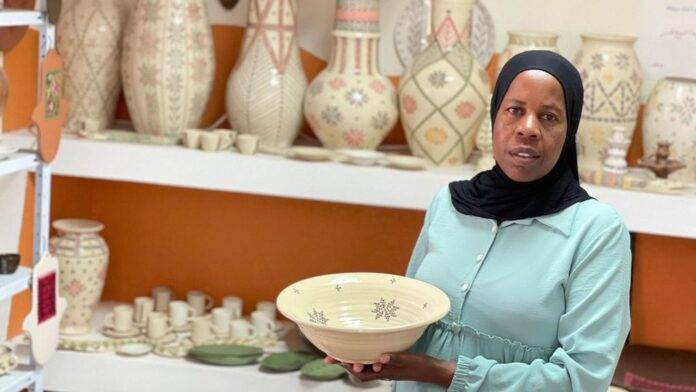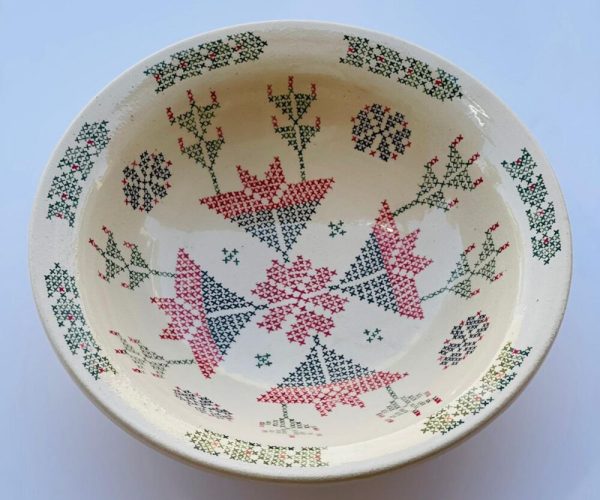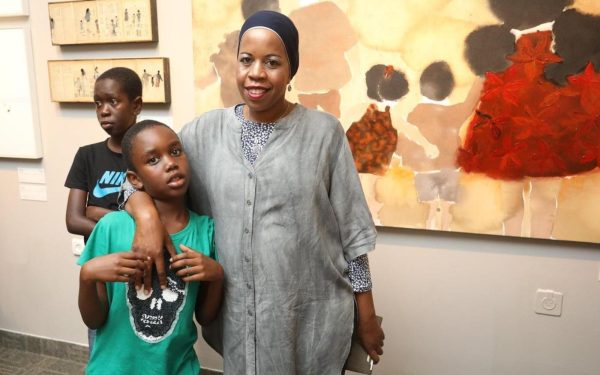
Zenab Grabia didn’t know any female ceramic artists in her community until she became one herself.
By Naama Barak, Zenger News
When Zenab Grabia was a young girl, she didn’t know any female ceramic artists in her community. There simply weren’t any. But thanks to her, nowadays young women from the Bedouin community have a successful role model in this craft.
Grabia lives with her family in the Bedouin town of Segev Shalom in the Negev, which is also home to her gallery exhibiting ceramics embellished with traditional Bedouin embroidery motifs.
Her journey toward becoming a ceramic artist was unusual, not least because she wasn’t a big fan of clay to begin with.
“At first I didn’t really understand ceramics,” she said. “I was always so afraid of getting dirty, but it was a mandatory course at college without which you couldn’t get your diploma. So I signed up for a ceramics summer course and began doing ceramics. I started making time for it and creating dishes.”
Then she had the idea of adding Bedouin embroidery to her pieces.

“I wanted to give my mother a gift that would last a lifetime, and she’s the one who taught me our embroidery. I discussed it with my art professor, and no one had previously done it.”
After some trial and error, Grabia reached her desired result.
“In some of the dishes, I just paint the embroidery using different colors, and in others I actually add the embroidery to the dish; I sew it in,” she said.
“It came out really well, and I receive very good responses. People always ask me how I came up with the idea. I see how happy and excited people are with the work, how they just hold the dishes and examine and ask how it’s done.”
Going against the grain
Making it in the art world took her some time, and in some ways included going against the grain of her community.
“Aside from me, I don’t know anyone else who does ceramics at all, although there are people who learned painting or finished a bachelor’s degree in art,” she says.
“All my studies took place at a later stage. I completed my 12 years of studies at the age of 24, and then started to head in a more academic direction. Now I’m [planning to study toward] a PhD in arts,” she says.
“With all the difficulties that were involved, I survived it and got my bachelor’s degree and my teaching certificate, and that’s when I started thinking differently — that I could do a master’s and that I want it to be in art.”
Grabia does her ceramic work on the side; she works full time as a schoolteacher and preschool teacher for the Education Ministry. Nevertheless, she’s been quite successful. Her gallery became a popular stop for tourist groups in Israel, and she has done exhibitions abroad.
Blazing a path
“A Bedouin woman really can develop her art this way, but when I was starting out it wasn’t an easy thing to do — even nowadays there’s some difficulty with doing art and teaching art — yet with all of these obstacles I insisted on it with my family until they agreed,” Grabia says.
“It makes me happy to see my success and realize that the sky’s the limit for me,” she adds. “I’m pleased with it, and also serve as somewhat of a role model — you can now matriculate in art in Segev Shalom.”

Grabia said her husband, Suleiman al-Abid, is supportive of her ambitions and even assists her.
“My husband never studied it, but he caught the ceramics bug from his wife. He helps me a lot. Sometimes we have joint ideas, we travel together to exhibits. He loves it.”
She has been especially appreciative of his support through the pandemic.
“I couldn’t have done it without him; I would have broken down a long time ago if I were by myself,” she says. “COVID really affected us. Before, we used to have buses coming to the gallery all the time, but [during the pandemic] only one group came to us.”
It’s not yet possible to purchase Grabia’s works online, but she hopes to get an ecommerce option up and running so that she can reach customers anywhere.
“Lots of people approach me and ask me for my artwork and I really think that once we also go online, we’ll market what we do abroad too. Inshallah, it will happen,” she says. “I can see that once I put my things online, they’ll get snatched up.”
–
In Somalia, a Rare Female Artist Promotes Images of Peace
Famed Cathedral Names Artist to Replace Confederate Windows
Baking Fortunes: Young Cameroonians Find Creative Ways To Beat Unemployment



